Contents
Guide
TEN GARMENTS
every man should own
PEDRO MENDES
TEN GARMENTS
every man should own
A Practical Guide to Building a Permanent Wardrobe

Copyright Pedro Mendes, 2021
All rights reserved. No part of this publication may be reproduced, stored in a retrieval system, or transmitted in any form or by any means, electronic, mechanical, photocopying, recording, or otherwise (except for brief passages for purpose of review) without the prior permission of Dundurn Press. Permission to photocopy should be requested from Access Copyright.
Publisher and acquiring editor: Scott Fraser | Editor: Kate Unrau
Cover and interior designer: Laura Boyle
Cover image: istockphoto.com/saemilee
Interior illustrations: Firdaus Ahmed
Printer: Friesens
Library and Archives Canada Cataloguing in Publication
Title: Ten garments every man should own : a practical guide to building a permanent wardrobe / Pedro Mendes.
Names: Mendes, Pedro, 1971- author.
Description: Includes bibliographical references.
Identifiers: Canadiana (print) 20200323482 | Canadiana (ebook) 20200323512 | ISBN 9781459747463 (hardcover) | ISBN 9781459747470 (PDF) | ISBN 9781459747487 (EPUB)
Subjects: LCSH: Mens clothing. | LCSH: Fashion.
Classification: LCC TT617 .M46 2021 | DDC 646.4/02dc23

We acknowledge the support of the Canada Council for the Arts and the Ontario Arts Council for our publishing program. We also acknowledge the financial support of the Government of Ontario, through the Ontario Book Publishing Tax Credit and Ontario Creates, and the Government of Canada.
Care has been taken to trace the ownership of copyright material used in this book. The author and the publisher welcome any information enabling them to rectify any references or credits in subsequent editions.
The publisher is not responsible for websites or their content unless they are owned by the publisher.
VISIT US AT
 dundurn.com
dundurn.com
 @dundurnpress
@dundurnpress
 dundurnpress
dundurnpress
 dundurnpress
dundurnpress
Dundurn Press
1382 Queen Street East
Toronto, Ontario, Canada
M4L 1C9
For Jonah
CONTENTS
INTRODUCTION
Why This Matters
T he world is drowning in clothes. Some estimates suggest that one hundred billion garments are produced every year. Thats over a dozen for each person on earth, which is four times as many as just twenty years ago. This is a problem because of the massive amounts of energy and resources, like water, being used to manufacture and ship all this clothing. But the problem doesnt end there. Much of this glut of clothing does not even last a year and ends up in landfills. Approximately thirteen million tons worth, which is about twice the weight of the Great Pyramid of Giza. In other words, clothing is no longer owned, it is consumed. And that has to change.
That may sound like a strange intro to a book about buying clothes, especially if you are expecting pages full of shopping lists and must haves for the different seasons. But Ive learned that clothing matters much more than that. When I first decided to change my wardrobe from whatever was on sale at the mall to classic menswear, I was working as a CBC Radio producer. I had the luxury of not only learning about clothes, but also making documentaries along the way. This gave me an excuse, in search of story material, to spend long hours in tailor shops and craftspeoples studios. In fact, Ive travelled all around North America and Europe meeting and learning from artisans: tailors in New York, shirt makers in Bologna, shoemakers in Paris. If I had just been commissioning garments, I could never have afforded that education. Plus, most people dont ask their tailor for their life story while getting an inseam measured. Journalism allowed me to go deeper than the fabric or the design, to uncover essential truths about the clothes we wear.
That is why I believe there is, if not a solution, a path toward a better relationship with our clothing. A path that is better for the environment and garment workers. And a path that will give us more enjoyment and a deeper, more satisfying connection with our wardrobes. The solution is to buy less but buy better. Youve probably heard that before, and it might even make you roll your eyes. What does buy less but buy better even mean? And how do you do it? The point of this book is to guide you toward actually achieving that ideal. The result is not only a sustainable wardrobe but also a discovery of the true joy of dressing.
Buy Less
Its easy enough to buy less. Well, it should be. Just stop buying so many clothes. If we did if the average person in a developed country wore garments for two years instead of the now-common one year, we would cumulatively have a massive positive impact on the environment. Buying less is also a way to mitigate certain negative factors in the production of clothing. For instance, even though cotton is a natural fibre, its production requires an enormous amount of fresh water that could be otherwise used for drinking and agriculture in developing countries. Even worse is leather, which is probably the most environmentally destructive clothing material in the world due to the toxic chemicals used in the tanning process. And then theres the issue of animal welfare: some natural materials are a by-product of the food industry (leather) or harvested from living animals (wool). And so the onus is on us to keep that usage ethical (which can be subjective, I know) and as minimally impactful as possible.
However, if we purchased fewer jackets, fewer cotton shirts, and fewer leather shoes, and if we make them last longer, the overall impact would be lessened. We can offset the environmental impact of production by getting a longer life out of each garment. Fewer would be made, so on the whole, the global effect would be smaller.
But even though buying less sounds simple, it isnt. Not when there are so many options for cheap, fashionable clothes. Heres one strategy that might help: promise to never throw away a piece of wearable clothes again. Dont even let it be an option. Before you buy something, consider the life of the garment: What else can you do with it when you no longer want it? Is it just bound for a landfill because it wont last or because it is made of synthetic materials? What effect will this extra thought have on you while youre browsing at a department store or scanning through items online?
To buy less, I also use the one in/one out system. If I have all the essentials covered in my wardrobe and something new enters my life, something old must go. So I need to be ready to part with that item and to find it a good new home. For example, I currently have half a dozen sport jackets, and I love them all. The one in/one out system keeps me from buying any more sport jackets because if I did, Id have to part with one I already own. And since Im not simply going to throw away an old one if I do decide to bring in something new, the onus and responsibility is on me to figure out what to do with the old jacket. Donating to charity or finding a used store is always an option, but with the glut of used clothing in the world, these are not foolproof plans.

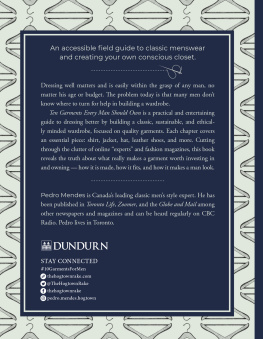
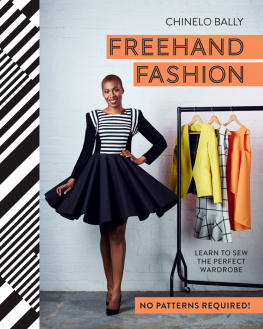
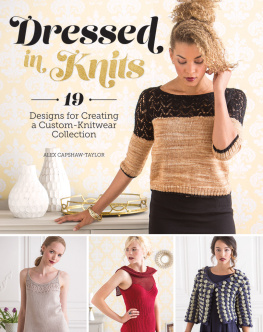
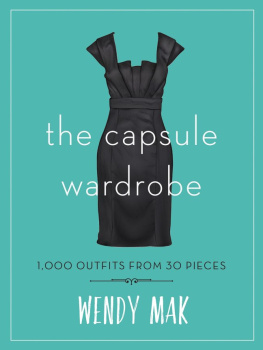
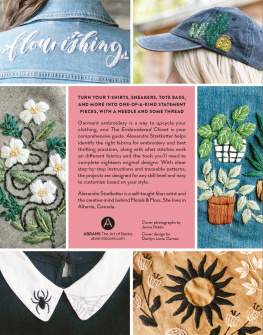

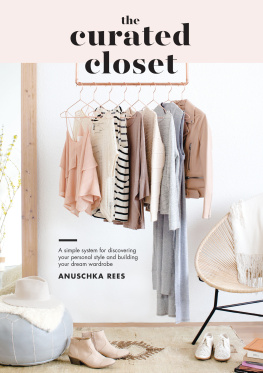
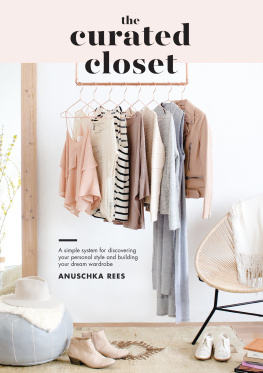
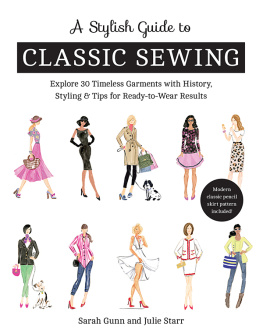





 dundurn.com
dundurn.com @dundurnpress
@dundurnpress dundurnpress
dundurnpress dundurnpress
dundurnpress